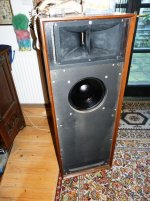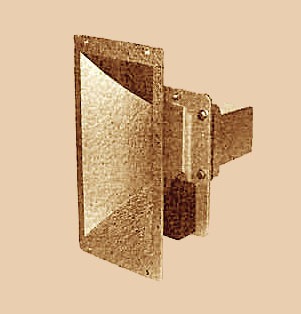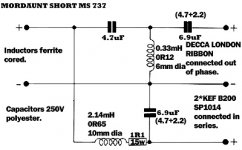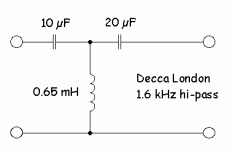I have recently acquired a pair of Decca Kelly ribbon tweeters (I already have the DK1 bass drivers). I bodged one of them into a Radford transmission line speaker with a cheap and simple Monacor 1st order x/o 2500Hz. A bit of research turned up this link Ribbon Tweeter Horn Loudspeaker: Decca London/Stanley Kelly - Efficiency, Size, Filter and Frequency Response.. The DK ribbon is astonishingly clear and I am encouraged to try the Decca x/o detailed therein with a x/o frequency of around 1000Hz. It seems simple enough to source the NP (?) caps. But I am confused by the characteristics of the 1.3mH and 650uH inductors which are available. What should I look for in terms of component values to ensure I get the right ones? Is it even a good idea? The amp doing the driving is a Radford Renaissance STA35.
Attachments
This is a bit of a labour of love, isn't it! 
Ancient but goody drivers... always interesting. Like these old Goodmans units:
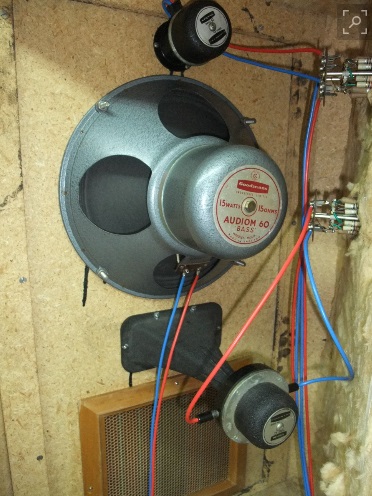
All I know about those old Decca Ribbon units comes from that same website.
Looks like the Kelly is a smaller unit than the London. I doubt if you want to cross them below 2kHz either way. Because they are very fragile. And that on a steepish 3rd order filter.
The Decca Brochure filter looks like a very low crossover to me. The Mordaunt Short and Deccavolt filters look altogether higher and safer in crossover.
Components are easy enough generally:
Aircoils: Visaton SP Air-Core Coils – Impact Audio
MKP Capacitors: MKP foil capacitors – Impact Audio
Ceramic Resistors: Ceramic resistors 10 W – Impact Audio
I think I'd start with the bass. What is it? 8", 10" or 12"? What is the DC resistance. Then you can guess a suitable crossover point. And the tweeter filter then follows.
I don't know quite how you estimate the AC impedance of a horn, but that is part of the equation.
Ancient but goody drivers... always interesting. Like these old Goodmans units:
All I know about those old Decca Ribbon units comes from that same website.
Looks like the Kelly is a smaller unit than the London. I doubt if you want to cross them below 2kHz either way. Because they are very fragile. And that on a steepish 3rd order filter.
The Decca Brochure filter looks like a very low crossover to me. The Mordaunt Short and Deccavolt filters look altogether higher and safer in crossover.
Components are easy enough generally:
Aircoils: Visaton SP Air-Core Coils – Impact Audio
MKP Capacitors: MKP foil capacitors – Impact Audio
Ceramic Resistors: Ceramic resistors 10 W – Impact Audio
I think I'd start with the bass. What is it? 8", 10" or 12"? What is the DC resistance. Then you can guess a suitable crossover point. And the tweeter filter then follows.
I don't know quite how you estimate the AC impedance of a horn, but that is part of the equation.
Yes, yours is a Decca London Ribbon.I am encouraged to try the Decca x/o detailed therein with a x/o frequency of around 1000Hz.
According to your link:
The MS 737 crosover shown further down the link provides a suitable crossover frequency of 3,500Hz.Essentially the London Ribbon can be used in a 2 way system. But generally a higher crossover frequency of about 3000Hz or even higher is recommended to avoid colouration.
The inductance and DC resistance of the ribbon inductor are clearly shown in the schematic (0.33mH/0.12Ω).
Attachments
Last edited:
Many thanks for the quick responses. I hadn't spotted the big difference between Kellys and Londons!
I think I shall aim to x/over around 2K to be on the safe side and get the best out of the tweeters.
Point about protecting them with a steeper roll off duly noted!
The DK1s are 12" - I think the 12" drivers in the t-lines are Goodmans - fairly sure Arthurs Radford and Bailey favoured them in the early models. The DK1s measure 15 ohms and, yes, I would like to know how to measure the Londons.
The question mark by NP was in relation to comments I have seen elsewhere to the effect that there are better non electrolytic caps for x/overs these days - is that the case?
I think I shall aim to x/over around 2K to be on the safe side and get the best out of the tweeters.
Point about protecting them with a steeper roll off duly noted!
The DK1s are 12" - I think the 12" drivers in the t-lines are Goodmans - fairly sure Arthurs Radford and Bailey favoured them in the early models. The DK1s measure 15 ohms and, yes, I would like to know how to measure the Londons.
The question mark by NP was in relation to comments I have seen elsewhere to the effect that there are better non electrolytic caps for x/overs these days - is that the case?
Polypropylene capacitors are nowadays used in tweeter crossovers.The question mark by NP was in relation to comments I have seen elsewhere to the effect that there are better non electrolytic caps for x/overs these days - is that the case?
The picture you show is the Decca London that is supposed to go as low as 1KHz.
The London can go to 1kHz, but is more often XOed at 1.5-1.6 kHz. Impedance is very flat so XO can be close to text book.
We got a chance to go at a set of Decca prototypes with an 8” paper driver and the London XOed at 1kHz. They were fantastic.
The London is amongst one of the best tweeters i have ever heard.
dave
Attachments
Thanks Dave - that appears to be the high pass bit of the one in the link (which connects notionally to 8 ohm drivers). Would that present a problem as the DK1 bass drivers are 15 ohm? Did you just use a high pass filter - or the low pass bit as well? Should I worry about the impedance of the London?
.. We got a chance to go at a set of Decca prototypes with an 8” paper driver and the London XOed at 1kHz. They were fantastic...
dave
I made a similar attempt with a KEF B139 in a TL, the result was terrible, and it wasn't the Decca's fault.
Btw, do you know Stan Kelly (RIP) suffered the same fate as George Luca? Kelly was forbidden to go anywhere near the Decca factory which manufactured his tweeters, just like Disney Studio is off-limit to Luca!
I made a similar attempt with a KEF B139 in a TL, the result was terrible, and it wasn't the Decca's fault.
!
That's interesting - was it down to the way the TL affects the mid-range performance of the woofer do you think? I know it's an odd combination but I have a pair of Radford Beaumondes (B139 and Celestion HF1300 - I think the HF1300 was made to Radford's spec) and they sound good.
Thanks Dave - that appears to be the high pass bit of the one in the link (which connects notionally to 8 ohm drivers). Would that present a problem as the DK1 bass drivers are 15 ohm? Did you just use a high pass filter - or the low pass bit as well? Should I worry about the impedance of the London?
Anything you can find out about the Decca London ribbon must be useful, since it appears to have come in 8 and 15 ohm variations. Any markings?
A 12" 15 ohm bass was not unusual back in the day. The Mordaunt Short circuit is actually 15 ohm bass, being two KEF B200's in series, but too high a crossover by the look of it.
A 12" bass has little useful output above 2kHz in practise, so planet10's (Dave's) 1.6kHz tweeter filter looks good to me.
Only issue now is a guestimate of values for a 1.6kHz filter for the 15 ohm bass. It's going to be a biggish coil around 3mH and a shunt of around 10uF I suppose. Plus some fiddling with a tank notch around 2kHz in my estimate. I think I'd want to model that!
That's interesting - was it down to the way the TL affects the mid-range performance of the woofer do you think? I know it's an odd combination but I have a pair of Radford Beaumondes (B139 and Celestion HF1300 - I think the HF1300 was made to Radford's spec) and they sound good.
The B139 has a significant breakup at around 1 khz. Probably best used at 4-500 with steep filter?
If the Decca can do 1-1.2 khz then BIG rewards are to be had. I dont have that ribbon BUT I have similar designs that goto 1k. Very easy to get great sound at that cross
I attempted to merge the TL as published by Bailey in the Wireless World, and another article about an infinite baffle (literally a hole in a wall) with a Decca London published in the Hifi News. The x-over was in fact at 1KHz as per the advertisement (it was the early 70's, I was young and naive...).
I had the worst of everything: no bass, the B139 breaking up in the mids, and the London straining to get down to 1KHz.
My experience of HiFi back in the 1960's day, is it was very much a Rich Man's game. It's just one of those facts about the World, that Men have 99% of the money. The other half are more interested in new kitchens and bathrooms. 
People spent a flippin' fortune on astonishingly well-engineered components.
Radford STA-25 valve power amps:
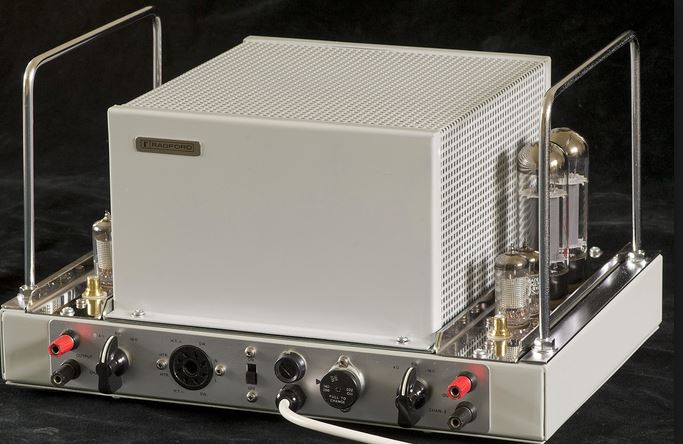
Garrard 401 turntables:
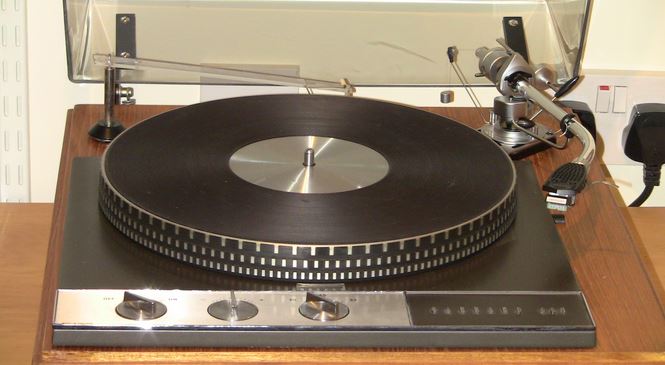
Actually worked best with a Decca London Moving Coil LP cartridge and a heavier tonearm.
Speakers were a matter of choice. The KEF Concerto witha B139 bass was quite a reasonable choice:
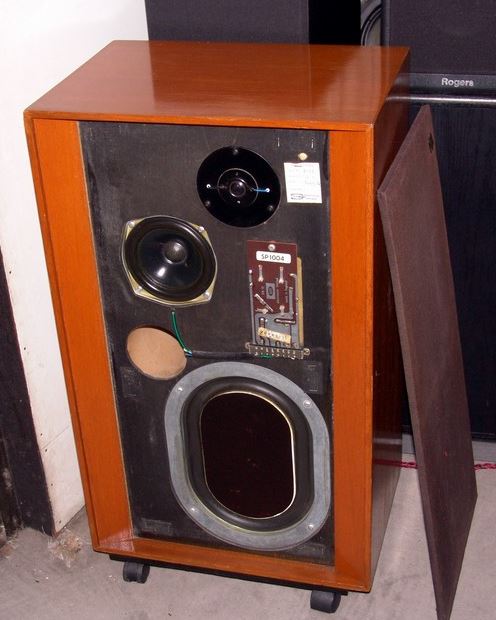
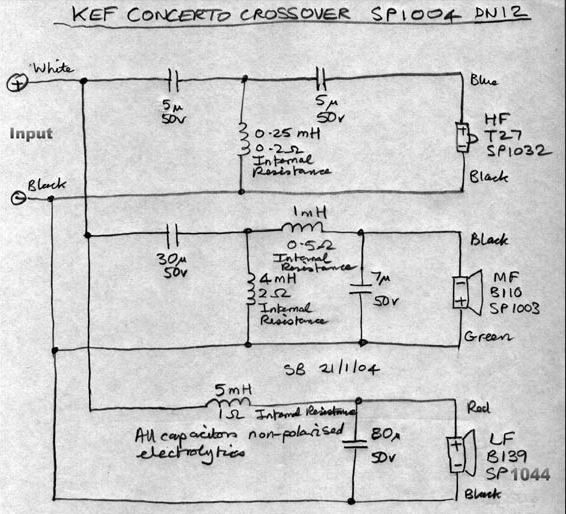
My own lively favourite was the monstrous 15" Tannoy with a concentric horn-loaded tweeter. It was as easy as sticking the driver/crossover in a big box.
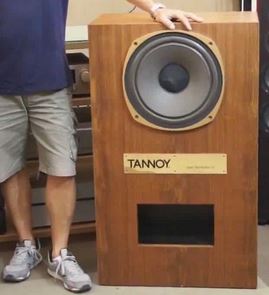
But let's stick with the interesting Decca London ribbon for now:
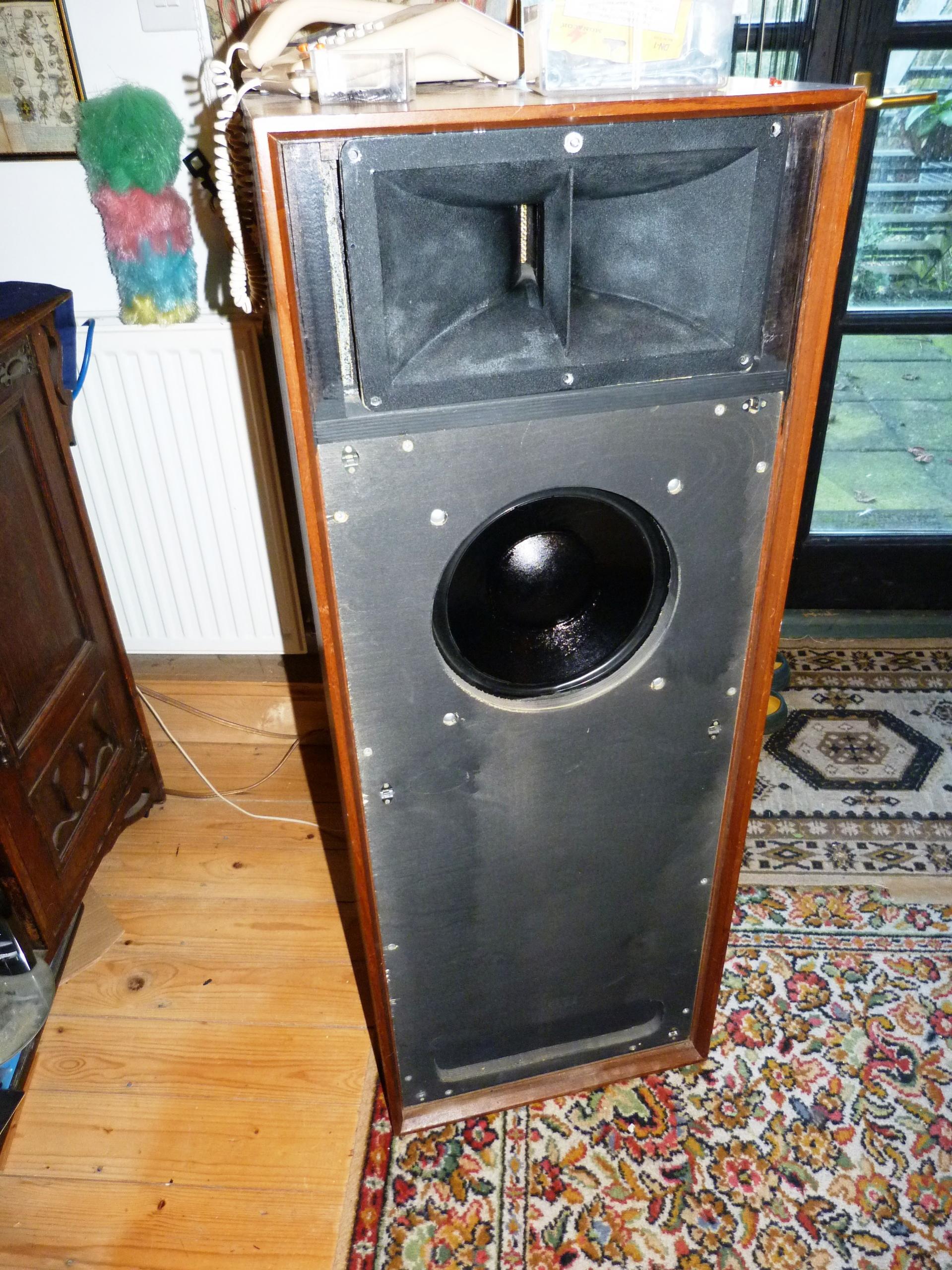
I hope the diyaudio fanatics can rise to the occasion of getting this baby working again. TBH, I am just a bit worried the tweeter won't be quite loud enough at 87dB for a 12" woofer. But time will tell.
People spent a flippin' fortune on astonishingly well-engineered components.
Radford STA-25 valve power amps:
Garrard 401 turntables:
Actually worked best with a Decca London Moving Coil LP cartridge and a heavier tonearm.
Speakers were a matter of choice. The KEF Concerto witha B139 bass was quite a reasonable choice:
My own lively favourite was the monstrous 15" Tannoy with a concentric horn-loaded tweeter. It was as easy as sticking the driver/crossover in a big box.
But let's stick with the interesting Decca London ribbon for now:
I hope the diyaudio fanatics can rise to the occasion of getting this baby working again. TBH, I am just a bit worried the tweeter won't be quite loud enough at 87dB for a 12" woofer. But time will tell.
I would suggest that the Decca DK30 and London ribbon speakers are better crossed over at a higher frequency, say 5kHz, as the air leakage around the edges of the ribbon diaphragm is not mitigated no matter how the horn is sized or shaped.
The efficiency/ impedance of the Decca ribbons is partially determined by the step down ( matching) transformer and the thickness of the diaphragm.
The efficiency/ impedance of the Decca ribbons is partially determined by the step down ( matching) transformer and the thickness of the diaphragm.
The XO i posted is only the HP. You have to come up with your own LP.
If you made it before proper models came out (ie 2k) then you have design methodology which hits maybe 1 time out of 10 and is not usually optimum.
3 variations on the same modern TL for the B139 here: Transmission Line Speakers
Those that have built the big dual woofer ones were very complimentary of their performance.

dave
I made a similar attempt with a KEF B139 in a TL, the result was terrible
If you made it before proper models came out (ie 2k) then you have design methodology which hits maybe 1 time out of 10 and is not usually optimum.
3 variations on the same modern TL for the B139 here: Transmission Line Speakers
Those that have built the big dual woofer ones were very complimentary of their performance.

dave
We are on the same page Steve - Decca and Radford are my little weaknesses. I have owned 2 STA25s and my current Renaissance STA35 is Woodside's revival of the very same. Cartridge in a palpably heavy unipivot tonearm is the Garrott tipped Decca super gold. I grew up not far from the Radford factory in Ashton Gate - unaffordable in those days!
I am also encouraged by the comments about the upper limit of the bass driver. I am comparing the lashed up London in the old t-line with the other unmodified t-line (4 way) and the benefits in clarity of the former are currently outweighed by the relatively smooth transition through the frequencies of the latter. Instinctively (wrongly or rightly) I want the Londons to do a little bit more of the midrange. Mixed messages here but I shall keep on reading.
I am also encouraged by the comments about the upper limit of the bass driver. I am comparing the lashed up London in the old t-line with the other unmodified t-line (4 way) and the benefits in clarity of the former are currently outweighed by the relatively smooth transition through the frequencies of the latter. Instinctively (wrongly or rightly) I want the Londons to do a little bit more of the midrange. Mixed messages here but I shall keep on reading.
The B139 has a significant breakup at around 1 khz. Probably best used at 4-500 with steep filter?
KEF typically XOed around 400 s did the IMFs, 2nd order IIRC, steeper and lower would be better. Those XOs did not completely kill that resonance.
dave
- Status
- This old topic is closed. If you want to reopen this topic, contact a moderator using the "Report Post" button.
- Home
- Loudspeakers
- Multi-Way
- Decca Kelly ribbons - crossover advice
